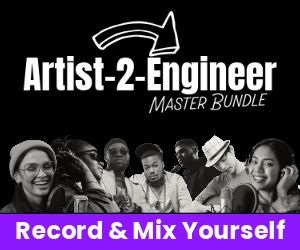
I vividly remember the excitement and validation I felt when I received my first royalty check for a sync deal I landed with CBS. It was for a track that made its way into a popular TV show, and the initial upfront sync fee was thrilling on its own. But that was just the beginning. The deal also generated performance royalties from the episode’s airings, and another sync fee came in when the show was released on DVD.
Even more rewarding were the additional performance royalties from international PROs as the show reached global audiences. This experience not only underscored the importance of music royalties but also highlighted the multifaceted ways in which creators can be compensated for their work. Let’s explore the various types of royalties and how they are collected and distributed.

Performance Royalties
Performance royalties are generated when a song is publicly performed or broadcasted. This includes plays on radio, TV, live performances, and digital streaming platforms. Performing Rights Organizations (PROs) such as ASCAP, BMI, and SESAC play a crucial role in collecting performance royalties on behalf of songwriters and publishers. These organizations monitor and track performances, collect royalties from venues and broadcasters, and distribute them to rights holders.
Example: Imagine a songwriter named Sarah who wrote a hit song that receives heavy rotation on radio stations. ASCAP tracks the performances of Sarah’s song and collects royalties from radio stations. Sarah then receives her share of the royalties through ASCAP’s distribution system.
2. Mechanical Royalties
Mechanical royalties are generated from the reproduction and distribution of physical or digital copies of a song. This includes sales of CDs, vinyl records, digital downloads, and streams. Mechanical royalties are typically paid by record labels or digital music services to the songwriter, publisher, or copyright holder. Organizations like the Mechanical Licensing Collective (MLC) in the United States oversee the collection and distribution of mechanical royalties.
Example: Let’s say a music streaming service like Spotify streams a song written by John. Spotify pays mechanical royalties to John’s music publisher, who then distributes a portion of the royalties to John as the songwriter.
3. Synchronization Royalties
Synchronization royalties are earned when a song is synchronized with visual media such as movies, TV shows, commercials, or video games. These royalties are negotiated directly between the rights holder (songwriter, publisher, or record label) and the entity using the music. Companies like Harry Fox Agency (HFA) help facilitate synchronization licensing and collection of royalties.
Example: Suppose a film production company wants to use a song written by Emily in their upcoming movie. The production company negotiates a synchronization license with Emily’s music publisher, and Emily receives synchronization royalties for the use of her song in the film.
For a deeper understanding of the music industry dynamics, copyrights, and licensing, check out our other posts: The Music Industry: Understanding its Dynamics and Key Players, Overview of Music Copyrights, and The Essentials of Music Licensing: Maximize Your Earnings.

4. Streaming Royalties
With the rise of digital streaming platforms, streaming royalties have become an increasingly important source of income for rights holders. Streaming services like Spotify, Apple Music, and YouTube Music pay royalties based on the number of streams generated by a song. The royalties are collected by music distributors or record labels and then distributed to the appropriate rights holders.
Example: If a song by Alex is streamed on a platform like Apple Music, the streaming service pays royalties to Alex’s record label or distributor. The label then distributes a portion of the royalties to Alex as the artist and to the music publisher as the songwriter.
5. Digital Performance Royalties
Digital performance royalties are generated from the public performance of songs on digital platforms, including internet radio, streaming services, and satellite radio. Organizations like SoundExchange specialize in collecting and distributing digital performance royalties to recording artists and rights holders. These royalties are separate from traditional performance royalties and provide additional revenue streams for creators in the digital age.
Example: When a song by Mia is streamed on Pandora or SiriusXM, SoundExchange collects the digital performance royalties and distributes them to Mia as the recording artist and to the music publisher as the songwriter.
Music royalties are a complex but essential aspect of the music industry, ensuring that creators are fairly compensated for their work. From performance royalties collected by PROs to mechanical, synchronization, and streaming royalties managed by various organizations and platforms, the royalty ecosystem involves a network of key players working together to support and sustain the music community.
Ready to master the business of music?
Whether you’re an artist looking to monetize your work through licensing or an aspiring engineer seeking professional mastery, AMP Music Lab in West Palm Beach, FL, and our online Academy of Music Production are here to help. Enroll in our Artist to Engineer Master Bundle, which includes comprehensive online courses and 1-on-1 private virtual lessons tailored to your needs. Unlock the full potential of your music with expert guidance and industry insights. Don’t wait—start your journey with AMP Music Lab today!















